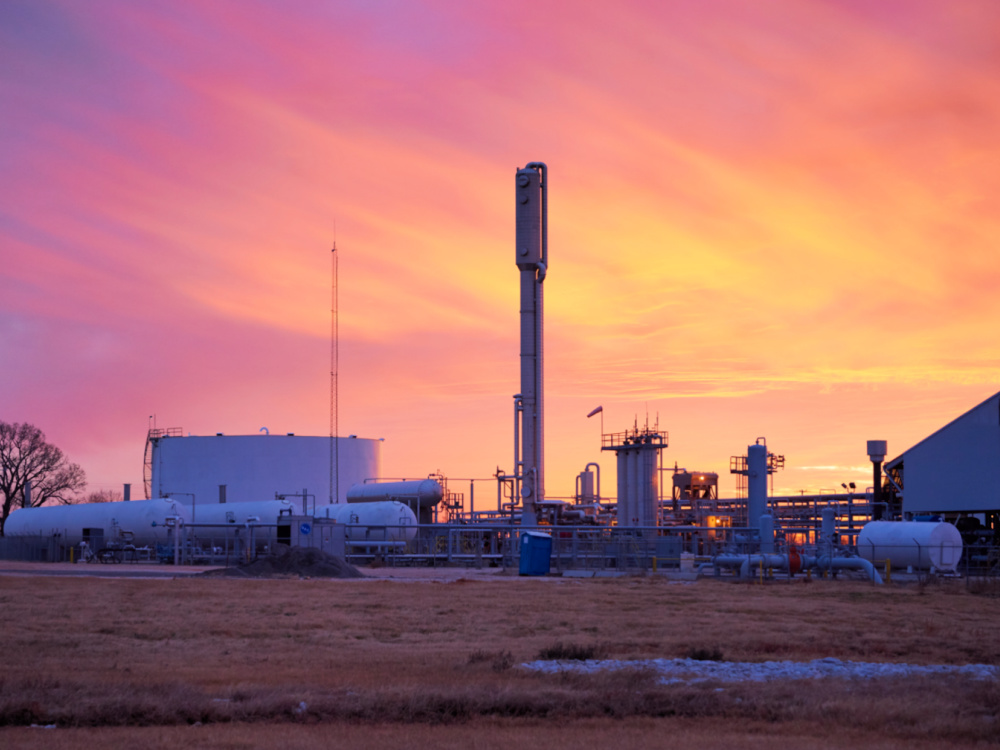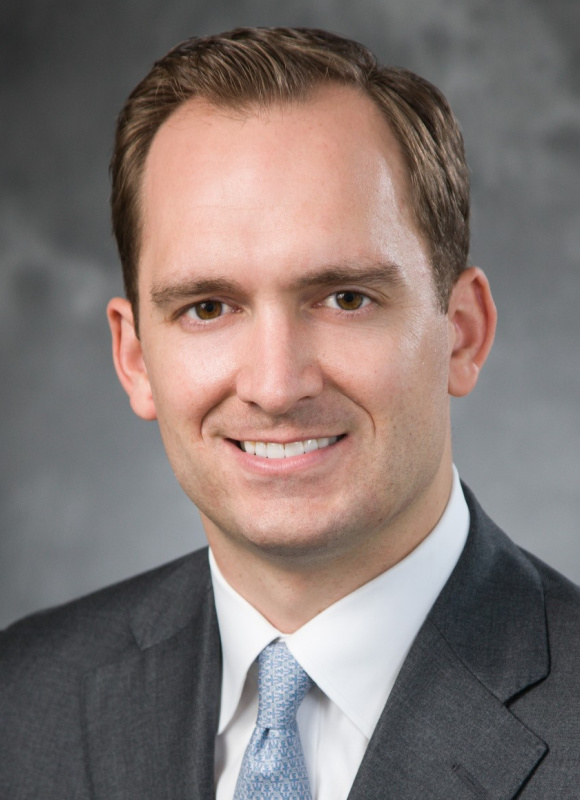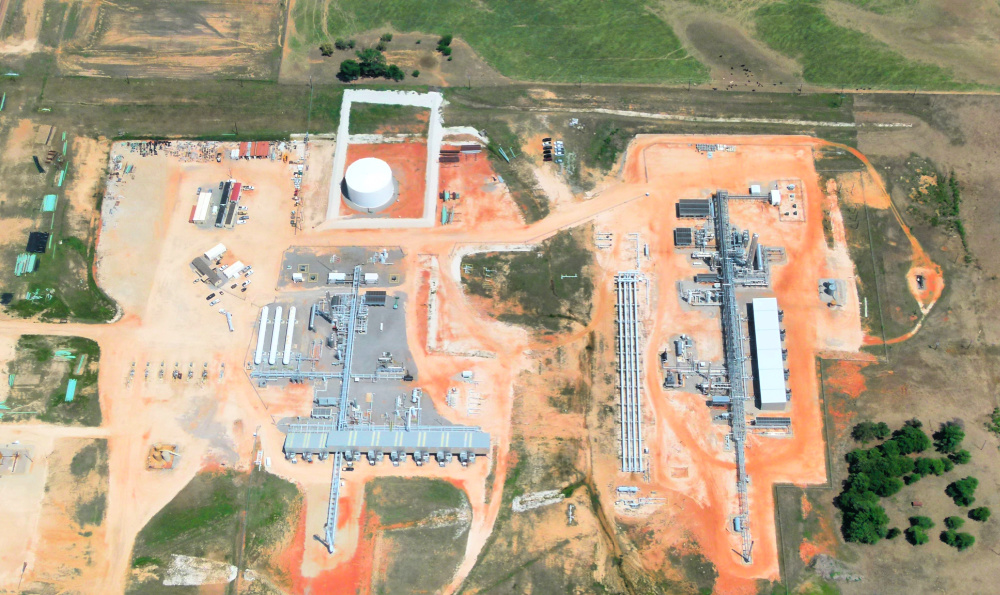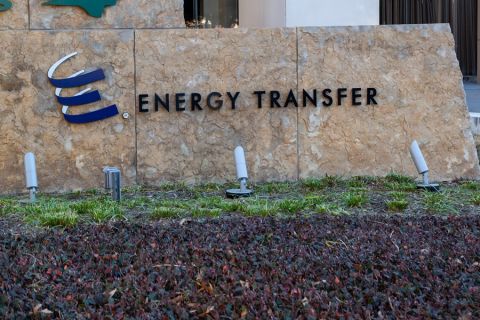Presented by:

Midcontinent deals in the past couple of years have been the blender variety, consisting of pulped bits of upstream and midstream assets that once showed promised but were pureed by downturns, COVID and bankruptcy.
In this bleak landscape, Mach Resources and backer Bayou City Energy found a natural symbiosis in strategy. In a Christmas Eve conversation in 2017, Mach’s Tom Ward and Bayou City’s William McMullen, discovered a shared business philosophy: Buy assets shunned by the industry, operate them economically during the downturn and wait for recovery.

The resulting company now boasts more than $100 million in free cash flow per quarter, which the company expects to increase in 2022 while keeping costs low and production gradually increasing.
The keen-eyed acquirers at BCE-Mach, as they refer to their partnership, have seized on distressed and overlooked assets and become one of the few consistent aggregators of assets in Oklahoma, far North Texas and Kansas.
In December, the BCE-Mach combination announced two new acquisitions totaling $66.5 million as it continued its pennies-on-the-dollar approach to buying.
The newest acquisitions—the partnership’s 10th and 11th—are expected to add $26.4 million in cash flow in 2022, according to the companies.
One of the deals, a bolt-on centered on the Oklahoma STACK, grabbed additional working interest in 61 wells in Kingfisher County, as well as midstream assets that are prerequisite for most of its transactions.
And in Kansas, BCE-Mach announced its fourth Mississippi Lime acquisition, expanding its operating footprint in Kansas to about 66,000 net acres and 193 operated wells primarily located in Barber County. BCE-Mach also added to its midstream infrastructure with 16 additional disposal wells and associated gathering systems.
Mach’s CEO, Ward, said the smaller bolton acquisitions are quickly and seamlessly assimilated and, like most of its deals, won’t require additional employees beyond a few field employees.
“We’ve been able to keep G&A basically flat since 2018,” he said.
The additional acreage and interest will plug in to an already sprawling 678,000 net acres held by BCE-Mach at the end of September, with a staggering 97% of its leasehold HBP.
The M&A BCE-Mach has engaged in has come through a close partnership with private equity capital provider Bayou. It’s a partnership built on trust and consensus, as the companies watch each other’s backs and check each other in every transaction they consider.
Mach is led by Ward, the co-founder of Chesapeake Energy Corp., SandRidge Energy Inc. and Tapstone Energy. Bayou is stewarded by McMullen, the firm’s founder and managing partner, who began his career in oil and gas finance at the Global Energy Group at UBS Investment Bank and continued in private equity at Denham Capital and White Deer Energy. He went on to found Bayou City Energy in 2015, which now has approximately $2.7 billion in assets under management. He is also co-founder of Ara Partners.
RELATED:
Tom Ward-led Group Ends Year with Back-to-back Acquisitions
In a joint interview, Ward and McMullen said that a window may be closing, though slowly, on the Midcontinent’s low-valued assets as commodity prices continue to tick upward.
Ward, circumspect about the deals Mach Resources has made, said the notion that the assets the company has purchased were easy pickings is misleading.
“I’d say it’s never easy,” he said. “Trying to find things that what we believe are discounts is something that requires us to have some knowledge of an area that maybe others don’t know and that we see discounted properties where others can’t see them. That just goes with our management team’s decades of experience through the areas that we work in.”

SWAT team
Bayou City and Mach agree the business plan does not stop at simply acquiring cheaply. Ward and his team at Mach Resources, which Ward affectionately calls his “SWAT team” of oil and gas professionals, work to implement cost savings, sometimes even before acquisitions close.
Ward credits his team at Mach, 80% of which has worked with him over the years at Chesapeake, Sandridge or Tapstone. Mach has purchased based on that experience, science and a strong contrarian faith in the Midcontinent that has otherwise been a virtual dead zone for deals in the past two years.
The SWAT team has “tentacles” across the Oklahoma oil and gas complex, from field-level personnel and service providers to regulatory bodies and financial institutions.
“We will not acquire an asset unless there is a Day One plan to cut costs and improve production, thereby making the entry metrics even more attractive than publicly stated. That dynamic really accelerates returns for investors, especially when overlayed with the opportunity to purchase assets at very attractive prices,” Ward said. “We have cut LOE by about 30% or more in every acquisition that we have made.”
With a unified purpose, Mach and Bayou City have amassed a formidable position in the Midcontinent. That’s largely due to a fluid, equal partnership that has resulted in 11 acquisitions and counting.
Ward recalls meeting McMullen in late 2017 when both were considering different ventures and partnerships. But in 2018, Ward said few individuals or private equity groups were aiming to buy in distressed areas and focus on generating free cash flow.
“I wouldn’t say Bayou City was unique, but Will individually had the same mindset that I did, that the industry wasn’t … at the time necessarily spending their capital correctly and that we were due for a time that maybe there could be opportunities for us,” he said.

The partnership that was forged in 2017 became one in which Ward and McMullen talk nearly every day, walk through acquisitions jointly and analyze assets together.
‘Unnatural holders’
McMullen said BCE-Mach partnership has flourished, particularly in the past three years, as the upstream sector has been hit by waves of price shocks.
“We wanted to take advantage of that,” McMullen said, adding that his expectation was that commodity prices would stabilize and that, particularly for natural gas, demand would rebound.
The Midcontinent was a Death Valley for investors, with stocks becoming worthless, first lien debtholders wiped out and, McMullen and Ward said, the area was considered un-investable
Over the course of 11 deals, BCE-Mach acquired $1 billion dollars of infrastructure built by prior owners, including saltwater disposal, gas gathering and processing, crude oil gathering, storage and even an electric grid.
The Midcontinent has what Ward calls an “abundance of unnatural holders” consisting of 2019 and 2020 first and second lien debt holders who took on equity from failing business. Those companies, now seeing higher commodity prices “would like to be out of owning equity, so there is a decent amount of [A&D] opportunity still left.”
McMullen said the Midcontinent is seen as having higher breakeven costs than other basins, but that’s largely “because people are looking at it on just the upstream-only economics.
“We wholly own a lot of our gas gathering and processing, our saltwater disposal, compression. I think even in the Miss[issippi] Lime, Tom, we own a little bit of our electric grid up there,” he said. “So, when you factor that in and you’re able to offset your cost because you integrate other sort of infrastructure systems into your underwriting, that breakeven molecule, whether its oil, NGL or gas, is a lot lower obviously if you’ve been able to vertically integrate your upstream and midstream systems.”
BCE-Mach’s strategy was exemplified by its deal to purchase Alta Mesa Resources in April 2020 for $220 million. In addition to upstream assets, Mach also bought control of Kingfisher Midstream, which includes 453 miles of gas gathering pipeline, 108 miles of oil pipeline and gas processing capacity of 350 MMcf/d.
“That does actually make us a low, low-cost producer because we have the benefit of all that infrastructure that comes in line with these assets,” McMullen said. “And again, credit to Mach and their teams, but we don’t outsource a lot of that capability either. We have all of that in-house. It’s Mach’s crews that are running the Kingfisher Midstream assets that we purchased from Alta Mesa out of bankruptcy.”
Mach’s production is split among oil, natural gas and liquids, with oil consisting of 25% of its production but 50% of its revenue, Ward said. Control of the infrastructure allows the company to move commodities to the market to Mach’s advantage.
“We have so many synergies being able to send our molecules to our gas gathering plants, processing plants, and then being able to take those molecules to market as we see fit,” McMullen said. “Being able to have your finger on all of those different touch points allows us to be able to send the molecules when we want to send them and get really, really good pricing for them because before they leave our ownership, we’ve already sent them much further down the stream than a lot of other operators.”
Ward said every acquisition BCE-Mach makes is an attempt to “find something that we don’t give any upside to.”
Like the Alta Mesa deal’s midstream bonus, Mach’s 2018 purchase of Chesapeake’s Mississippi Lime assets also included in-place infrastructure.
“So, we continued to have two rigs running currently in the Alta Mesa area that we had in Kingfisher County, and we drilled over 90 wells and will put rigs back to work in the Miss Lime probably in [2022] that both have tremendous upside,” Ward said.
The company is generating more than 100% rates of return on its drilling program, as well, by watching costs closely.
“We pinpoint the locations that we choose,” he said. “We don’t have just continual programs of drilling, but we have very large acreage swaths that we pick specific locations and then with the added benefit of having a midstream system in place.”
Mach will likely continue to roll up acreage in and around Oklahoma through bolt-on acquisitions.
“Bayou City still has hundreds of millions of dollars of equity that we have behind Tom, incremental equity that we’d like to have put to work over the next couple of years,” McMullen said. “We’ll do that on an opportunistic basis. We’re not in a hurry to do anything, but again, if something presents itself and it makes sense, we’ll evaluate it just like we have been in these past 11 acquisitions.”

Mississippi limelight
In every acquisition they consider, Ward and McMullen are talking, usually through multiple conversations.
“We understand what we’re both looking for, and if either one of us didn’t care for an acquisition, we wouldn’t do it,” he said.
McMullen said that Bayou City and Mach each have their own engineers who collaborate. Mach passes along a recommendation that he and Ward then discuss.
“It is interesting. Sometimes the recommendation from Mach … Bayou City will say, ‘Oh yeah, we feel good about this. Why don’t we do a little bit more?’
“Sometimes we say, ‘This probably isn’t as high on our priority list. So, let’s do a little bit less.’ But it’s extremely collaborative. I think our visions and just our business strategy dating back to late 2017, Tom and I have been perfectly synced up, aligned on that and where we want to take the company.”
As commodity prices have improved, Mach has looked inward at its drilling program while still adding leasehold.
The recovery in oil and gas prices through mid-January has allowed Mach to pinpoint specific areas and intervals within its leasehold that have now become economically viable.
“Most of our northeast Kingfisher acreage that we bought from Alta Mesa, both in the Oswego and Osage, is economically viable today,” McMullen said. “We’ve got two rigs running there. The Mississippi Lime is certainly economically viable today, given all of the owned infrastructure that we have, especially given that we own our saltwater disposal systems up there as well. And we’re going to look to put out maybe a rig or two early next year on that acreage.”
The company now plans to “toggle” between drilling and an opportunistic acquisition strategy. And, because the company’s debt is so low, “we do actually have the ability to make that toggle. So, we’ll continue going back and forth, I think, just as we said, opportunistically,” he said.
Ward said that Mach will also continue to focus on generating free cash flow.
As commodity prices have increased, Mach is running two rigs in Oklahoma, and the Mississippi Lime is economically viable today due to its ownership of integrated infrastructure.
BCE-Mach has also kept its leverage ultra-low. BCE-Mach targets an extremely modest financial leverage of total debt to EBITDA at or below 1.0x, and its development plan relies solely upon cash flows from operations targeting a 25% reinvestment rate, as defined as capex over EBITDA.
Based on its development plan, overall production should increase in 2022. The company produced third-quarter 2021 free cash flow of $111 million on EBITDA of $128 million, with 52,000 boe/d production (45% liquids). BCE-Mach enjoys shallow decline rates of 14% on its base PDP.
“We have a lot of free cash flow to either make distributions or to put into new investments alongside the equity that Bayou City provides,” Ward said. “I don’t know if it’s unique or not, but it’s a very good place to be in a strong market that still has, I think, a good amount of opportunity left in it.”
One piece at a time
BCE-Mach believes its low-leverage and low-cost structure provide tremendous operational optionality for the business. But the acquisition pipeline has not run dry. Mach will continue to roll up producing acreage. And with its business plan, BCE-Mach is built to withstand severe price shocks and adapt its month-to-month strategy quickly.
“In high prices, we drill; in low prices, we buy, and in between, we improve the hell out of our assets,” McMullen said.
McMullen said that initially, BCE-Mach was able to buy PDP assets at prices of PV-20. Now, even in the Midcontinent, they see assets trading at sub-PDP PV-10.
“Where we’ve gone then is smaller assets. I think the larger multi-$100 million assets are going to trade very competitively. They’re just visible,” McMullen said. “It’s much easier to buy one 50,000-boe-a-day asset than it is to do what we’ve done and acquire 11 of them if your goal is simply to own that amount of production.”
Bayou City is one of the only private equity funds actively investing in the Midcontinent, but this trend may be changing. Other investors are starting to recognize they cannot ignore the cash flow from the Midcontinent.
“Whatever the underlying driver is, the output is that there’s just not a lot of upstream funds focused here anymore,” McMullen said. Bayou City and Mach have viewed other firms’ absence as their opportunity.
“We have a lot of free cash flow to either make distributions or to put into new investments alongside the equity that Bayou City provides,” Ward said. “We’re well-positioned with plenty of capital to deploy to be in an active market that still has opportunity left.”
Bayou’s ability to tap into additional equity gives BCE-Mach an advantage in executing deals, since money remains tight in the oil and gas space.
Ward said it’s still a difficult time to find capital, and while there are healthy companies that can take on debt or issue equity, adding new debt into the market, IPO fundings and private equity sponsors are still “nowhere near where it was a few years ago.”
McMullen said acquisition capital, whether it comes from public markets or private equity, is especially scarce for assets starting at $100 million.
“A lot of what’s been going on in the public space has been debt refinancings … you have seen a good amount of [refinancing] on balance sheets to lower that cost of capital,” McMullen said. “From the private landscape, it’s going to be exceptionally difficult for private equity funds to raise upstream focused capital.”
That may be due to several factors, such as ESG, the focus on the energy transition or investors that still lack the appetite to invest due to the results during the past decade in oil and gas.

“Whatever the underlying driver is, the output is that there’s just not a lot of upstream-focused funds anymore,” he said.
‘Pennies in the dirt’
Mach and Bayou City have centered their acquisitions in Oklahoma and Kansas. With other areas having also been hit by the downturn, Ward and McMullen are away of opportunities but none that fit into the lucrative coexistence of upstream and midstream assets.
That value proposition is difficult to duplicate elsewhere, Ward said.
“We have really focused on cost control. I guess, the motto that our operational team has is that we look for pennies in the dirt,” Ward said. “Anything that we take on is really focused on how we can save money.”
McMullen said that BCE-Mach does look elsewhere but agrees that from a philosophical and strategic view, the market outside of core Delaware and core Midland Basin assets are too expensive.
“As we were looking to build the Mach enterprise, from the outset, we said, if nobody cares about inventory and the focus is cash flows and PDP assets, then where are PDP assets trading most cheaply? And [we] really didn’t care why that was, necessarily, as long as we get diligent and understand why the margins were there,” he said.
That largely ties in with infrastructure as a critical ingredient for most transactions.
“Essentially where is our dollar going to go the furthest and being able to acquire as much production as we can so that when our thesis of higher commodity price in the future pans out, where are we going to get the most bang for our buck,” McMullen said.
As with the broad view of most energy investors, Bayou City and Mach’s shareholders are focused on cash flows and returns and less about growing production through the drill bit.
“It would be a higher bar, I believe, to go out of the basin right now,” he said.
Ward said that if the market moves to a point where PDP acquisitions are valued at PV-10 or higher, “we would probably look more to distributing more cash flow and allowing our production to decline some,” he said.
“There still is a market here, really across the whole area, the Midcon, that you can find good acquisitions to be made at the metrics that we have chosen to buy at,” Ward said. “And again, if that changes, we don’t have to make any acquisitions because we’ve built up a very nice company.”
Recommended Reading
Enterprise’s SPOT Deepwater Port Struggles for Customers
2024-04-25 - Years of regulatory delays, a loss of commercial backers and slowing U.S. shale production has Enterprise Products Partners’ Sea Port Oil Terminal and rival projects without secured customers, energy industry executives say.
Report: Crescent Midstream Exploring $1.3B Sale
2024-04-23 - Sources say another company is considering $1.3B acquisition for Crescent Midstream’s facilities and pipelines focused on Louisiana and the Gulf of Mexico.
For Sale? Trans Mountain Pipeline Tentatively on the Market
2024-04-22 - Politics and tariffs may delay ownership transfer of the Trans Mountain Pipeline, which the Canadian government spent CA$34 billion to build.
Energy Transfer Announces Cash Distribution on Series I Units
2024-04-22 - Energy Transfer’s distribution will be payable May 15 to Series I unitholders of record by May 1.




